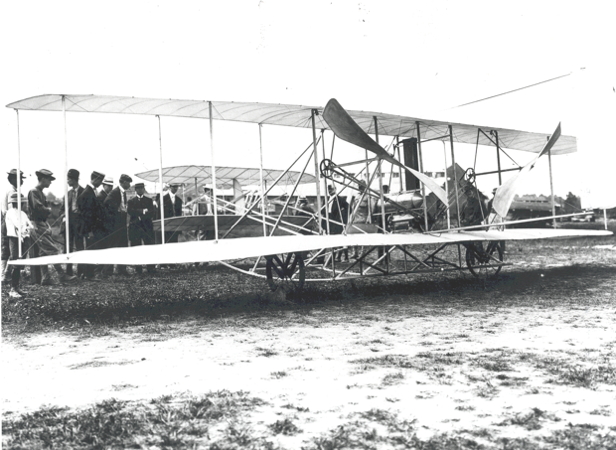 On 17 December 1903 in Kitty Hawk, North Carolina, the Wright Brothers – Orville and Wilbur – alternately flew their ‘Flyer’ four times, the longest of which covered 260 metres (852 feet) lasting just a second short of a minute. These daring feats on that fateful day meant they became the first people to successfully invent, build and pilot a heavier than airpower-driven machine.
On 17 December 1903 in Kitty Hawk, North Carolina, the Wright Brothers – Orville and Wilbur – alternately flew their ‘Flyer’ four times, the longest of which covered 260 metres (852 feet) lasting just a second short of a minute. These daring feats on that fateful day meant they became the first people to successfully invent, build and pilot a heavier than airpower-driven machine.
The main breakthrough of the Flyer is cited as the aviators’ invention of three-axis control, which enabled the pilot to steer effectively and maintain its equilibrium. The Ball Gown robes de mariée direction of the plane was controlled using a unique hip cradle invention which was operated by the pilot sliding his hips from side to side and lean into the turn. This was connected to the plane’s wingtips with wires, forcing the wings to twist, and by extension – roll. To assist these turns, the American inventors pioneered the idea of wing warping – the twisting of the wing – resulting in one end of the wing having more lift than the other. A rudder was also connected and controlled by the cradle.
The plane could be pulled up and down by a pull system which was operated by the pilot’s left hand. Today the elevator is traditionally located in the tail section, but in 1903 the Wrights decided to place it in the front of the plane as they assumed it would prevent the plane from nose-diving if the plane stalled. The aircraft was powdered by a 12 horsepower four-cylinder gas engine, constructed with the help of machinist Charlie Taylor and weighed 77 kilograms (170 pounds). The solitary control bestowed upon the engine was a fuel valve that was connected to a stick and once the engine was active this valve was used to cut the power.
To this day both states of Ohio and North Carolina take credit for the
Robe demoiselle d’honneur rouge Wright brothers and their extraordinary inventions. Ohio because Dayton was the base for the pair’s development and construction of their designs and North Carolina because Kitty Hawk was the site of this first world-changing flight.
